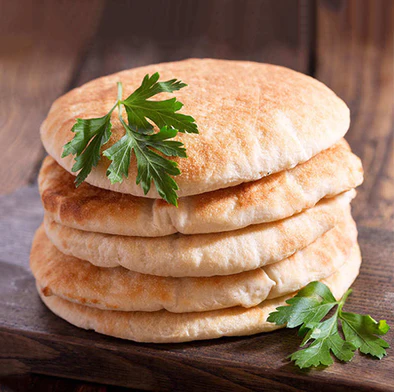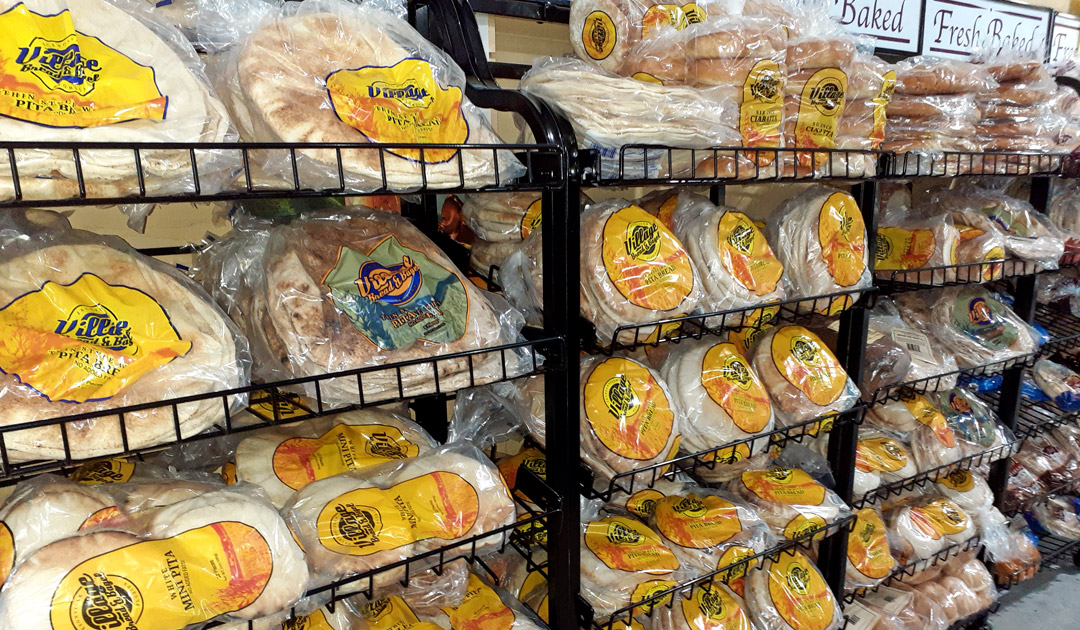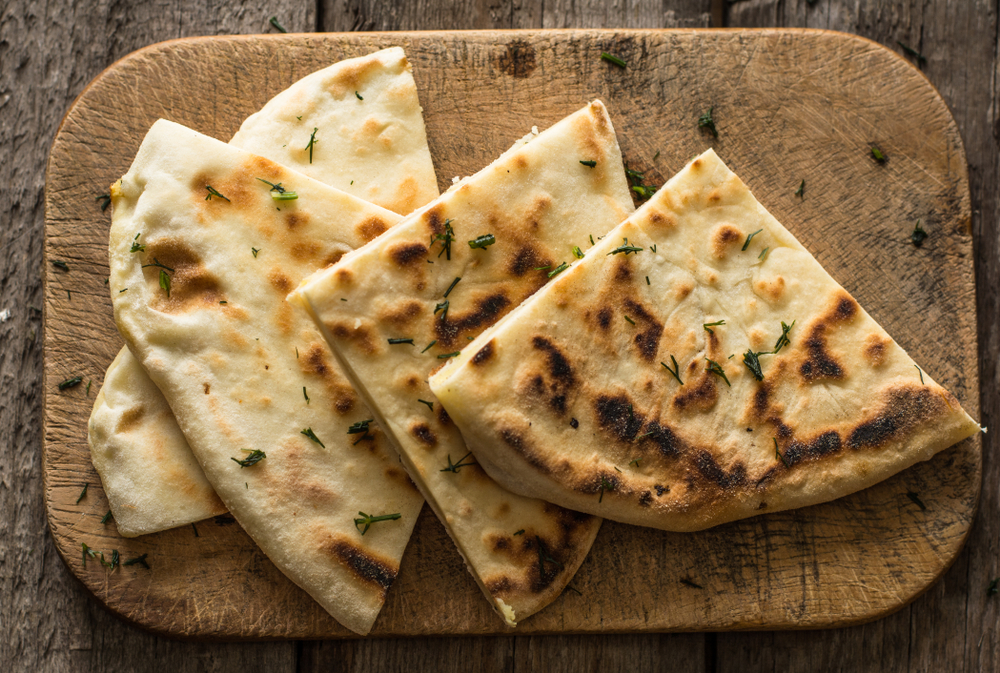How Long Does Pita Bread Last?
Jump To:
If properly stored, pita bread can last up to a week. But like bread, it quickly loses its quality, so the sooner you use yours, the better.
Pita bread typically lasts up to a week and maintains its finest quality for 3 to 4 days when left out on the counter. It keeps for 5 to 7 days in the refrigerator. The flatbreads can be frozen at any time if these times don’t suit you.

When purchasing pre-packaged pita bread, make the assumption that the flatbreads will remain in good condition through the written date and possibly a few days after. You can only really glean that much from it. Try to consume all of the pitas within 3 to 4 days of opening the package, or freeze any extras.
Quality of Pita Bread
Most handmade pita bread recipes have a life span of 3 to 4 days, which is roughly how long those flatbreads maintain their quality. Again, if you made too many or a large batch of bugs in advance, you can freeze them.
Pita bread eventually goes bad, just like ordinary bread. Depending on the recipe and storage circumstances, that can happen at any time. Of course, you may still eat stale pita bread, and the dish will still taste very excellent if you stuff the pockets with some mouthwatering ingredients. Probably not the best, but adequate if you’re hungry and want a fast snack.
The quality of your pitas improves the faster you eat them. And freezing is a terrific option if you need a longer time than a few days or you don’t want to worry about consuming your remains before they dry up and harden.

Pita bread can be kept in the refrigerator or at room temperature.
Put it in a bread box, brown bag, or linen sack to give it some breathing room while it’s on the counter. To prevent drying out, tightly seal it in a bag in the freezer before storing it. So anything that works well for storing ordinary bread also works well for storing pita flatbreads.
The best strategy for preserving pita breads at room temperature is to give them some, but not excessive, airflow. The bread must have the ability to expel any extra moisture it doesn’t require since if it is left entirely exposed, it will quickly dry out.
In Kitchen
Pitas progressively dry out as a result of permitting airflow, which is their biggest drawback. Because of this, both pita bread and your bread become stale after a few days. Pitas should be kept in zip-top bags, as many food bloggers advise, as a remedy for that. These bags keep the pitas from drying out too quickly since they keep all the moisture within.
It doesn’t all go smoothly, but it does help the flatbreads maintain quality for a few extra days. The problem is that too much moisture that can’t evaporate at room temperature is a perfect environment for mold growth. (In addition, the pitas don’t need to be very moist. If the flatbreads are stored at a high enough temperature, some water may evaporate from them and condense on the bag’s surface.) Using bags to store pitas is risky, especially if you keep the flatbreads at a warm temperature. Bags assist pitas to maintain quality.
In Refrigerator
Pita bread can be kept in the refrigerator as long as it is properly sealed, preferably in a ziplock bag. The naan will dry out if you don’t within a few days. Remember to press out the air from the bag and make sure the flatbreads are cool before putting them in the refrigerator, much like when storing pita breads in a bag on the counter.
Last but not least, you may have read reports of people whose flatbreads became absolutely dry after a day or two in the refrigerator. If you freeze food that is not sufficiently covered, this is quite normal.
Molded Pita Bread
Try to identify trends if you purchase or prepare pita bread on a regular basis so that you may adjust your methods in response to your findings.
Consider that when you purchase pitas in a plastic bag, they can develop mold even before you open them. That usually suggests you need to deal with some condensation that is occurring in that bag.
To let the flatbreads breathe and the humidity escape, one solution is to puncture a few holes in the bag. Alternatively, you may repack the pitas inside a paper bag to achieve the same result. In short, experiment with your pita bread storage methods until you find one that works.

What To Look For In Bad Pita Bread?
If the pita is moldy, throw it away. Toss a flatbread if the surface appears to be acting hazy. Pita breads can mold if they are tightly sealed on the counter and there is too much moisture that tries to evaporate but cannot. Mold growth is a result of humidity and ambient temperature.
Mold growth is not very common; instead, if your pitas are stored for an extended period of time, they are more likely to dry out and go bad. It’s up to you to determine whether a pita is past its prime and should be thrown out.
You can throw it out for quality reasons if you decide it’s too dry to use. Alternatively, you may try to resurrect it (more about that in the part after this), fill it with delectable things, and eat it. It’ll likely turn out to be just fine.
Other uses of stale Pita Bread
For instance, stale pita bread can be used to make breadcrumbs. You reduce it to a powder, toast it in the oven until lightly toasted, let it cool, and presto—homemade breadcrumbs.
Or you could create bread pudding using pita. Although bread pudding doesn’t last long, it’s a fantastic way to use up old pitas that you probably haven’t considered.

Pita Reheating Techniques
Pita bread tastes better when it is cooked. Because of this, many people warm pitas before stuffing them, especially if the filling is also warm. The quickest and simplest methods for reheating pita are:
- On the stove, a nonstick skillet. A heated skillet and one to two minutes per side are all you need. No oil or other fats are required.
- Within a microwave. The pitas should be irradiated for 20 to 30 seconds at maximum power. If they begin to dry out, reduce the power to half and lengthen each microwave session by 50 to 60 seconds.
How To Prevent Pita Bread from Drying Out?
Making sure your pita breads don’t dry out is another approach to improve the taste of them in addition to reheating. Alternatively, if they are already dry, you might be able to revive them with a little water.
You can achieve this by providing the flatbreads with a supply of moisture when you reheat them. Try gently patting some water on top of yours or dampening them with moist hands if you’re reheating them on the stove. If you want to prepare them in the microwave, you should wrap each flatbread in a damp paper towel, not a wet one.
You should be able to revive a moldy pita using either method, but don’t anticipate any miracles. A stale pita will always remain stale.

